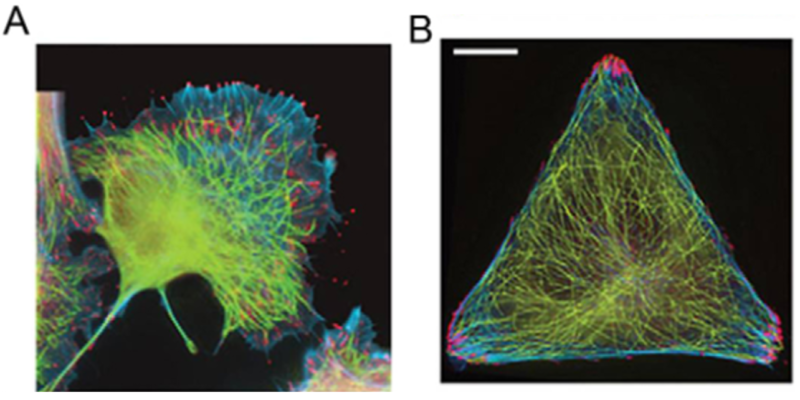Microtubule-dependent trafficking assay
Cell confinement for cytoskeletal organization
Cell confinement for cytoskeletal organization
Quantification of cargo speed and persistence, visualization of cytoskeleton tracks, standardization of cell shape and organization.
In standard cultures, cells are distributed in 2D monolayers causing them to acquire random shapes. This affects the distribution of their internal organelles, and the organization of microtubules (MTs) tracks.
Using 4Dcell’s micropatterns, the components of the cytoskeleton are spatially separated, and cells do not change their shape upon removal of the F-actin bundles. With this 4Dcell assay, we can study the long-range MT guidance mechanism and MT-dependent trafficking, observe and quantify MT growth trajectories and their directions over the entire cell by high-resolution microscopy.
Cell confinement enables the control of cell geometry and cytoskeletal organization [1]

(A) In unpatterned cells, cytoskeleton components are overlaped
(B) In cells micropatterned, the cytoskelon is organized.
(MT in green, focal adhesions in red and F-actin bundles in blue)
Microtubule growth trajectories and F-actin bundles in triangular cells.
(MT in green, focal adhesions in red and F-actin bundles in blue)
[1] Huda, S., et al. (2012). J Cell Sci, 125(23), 5790-5799.